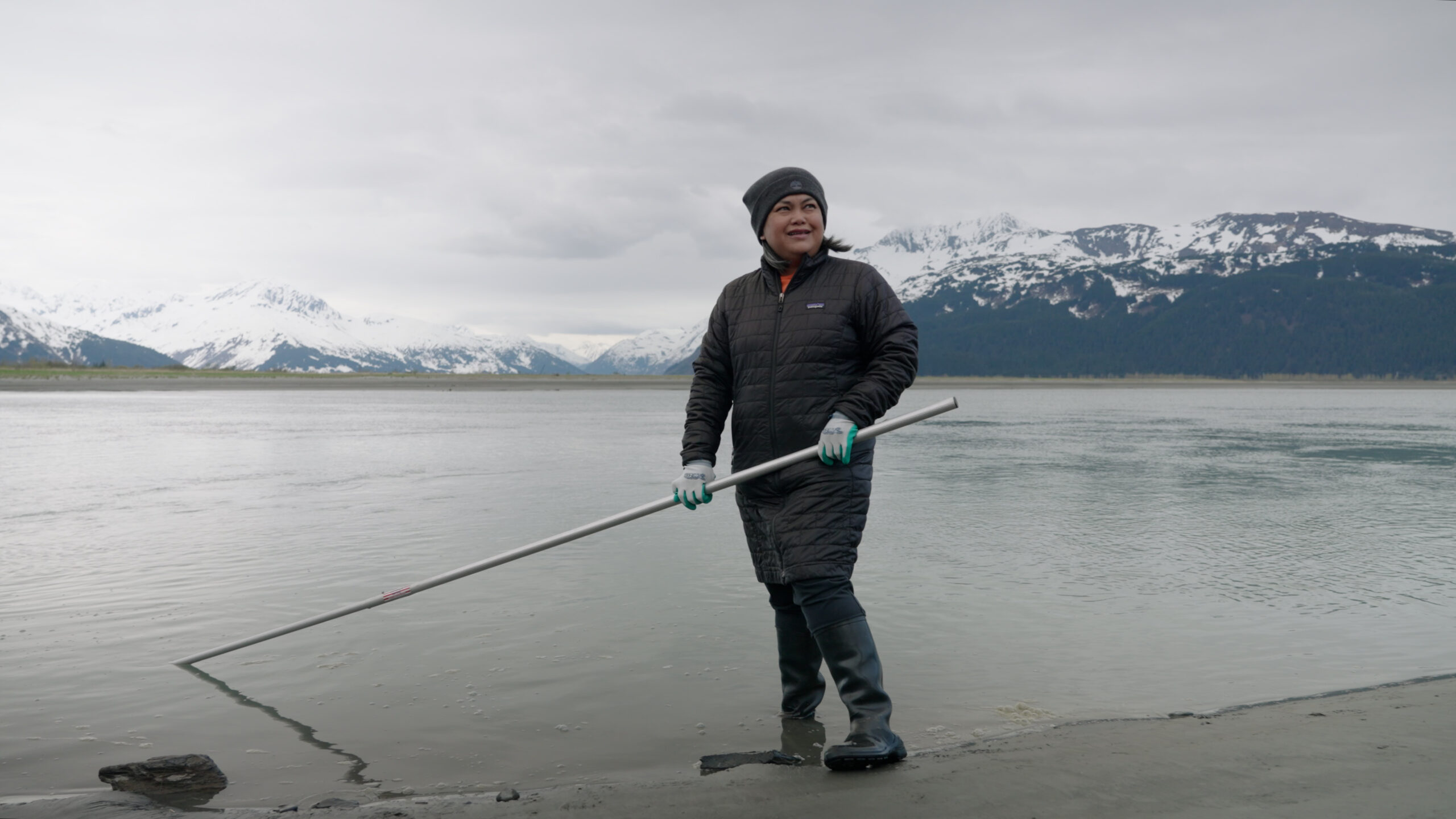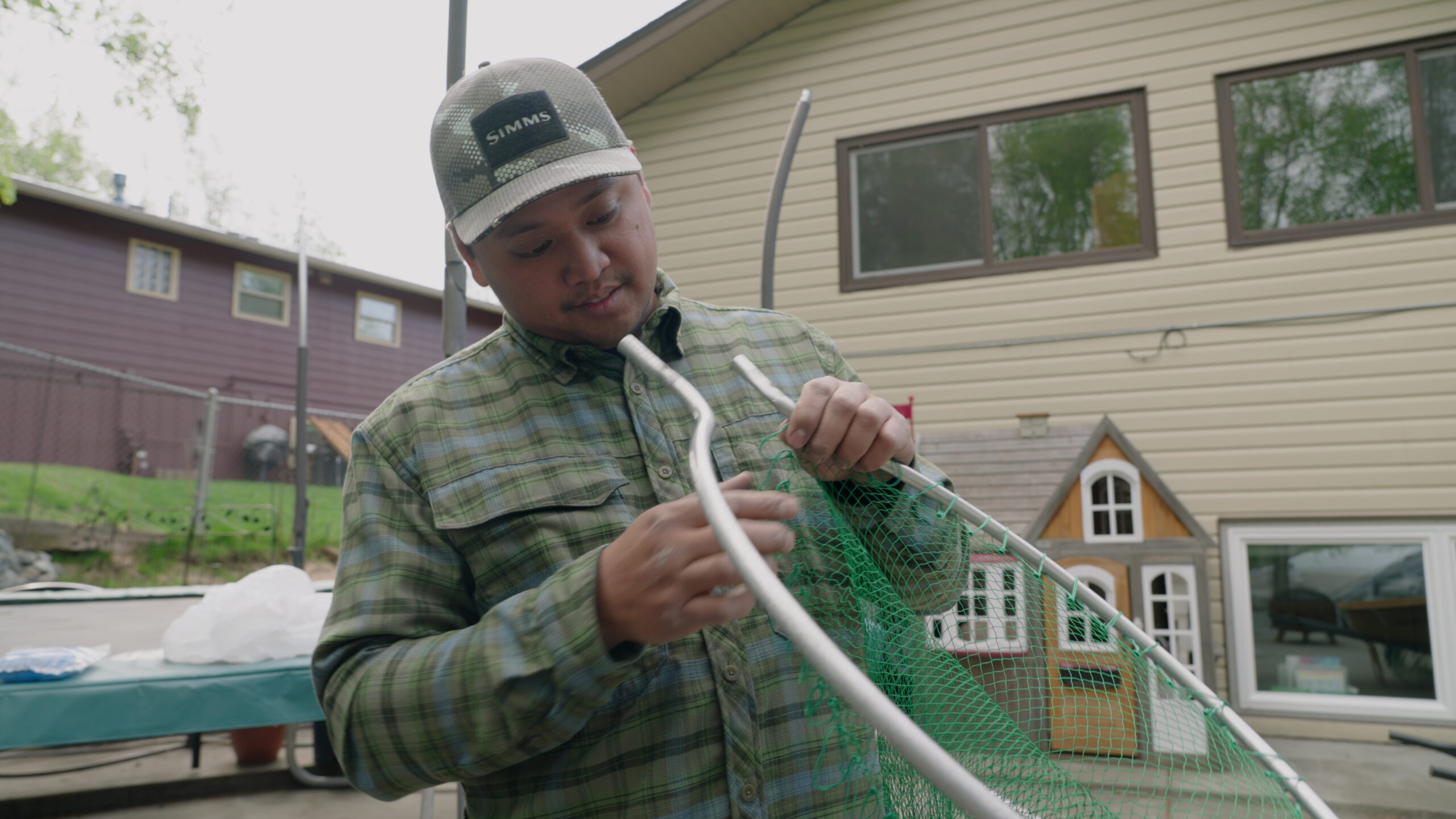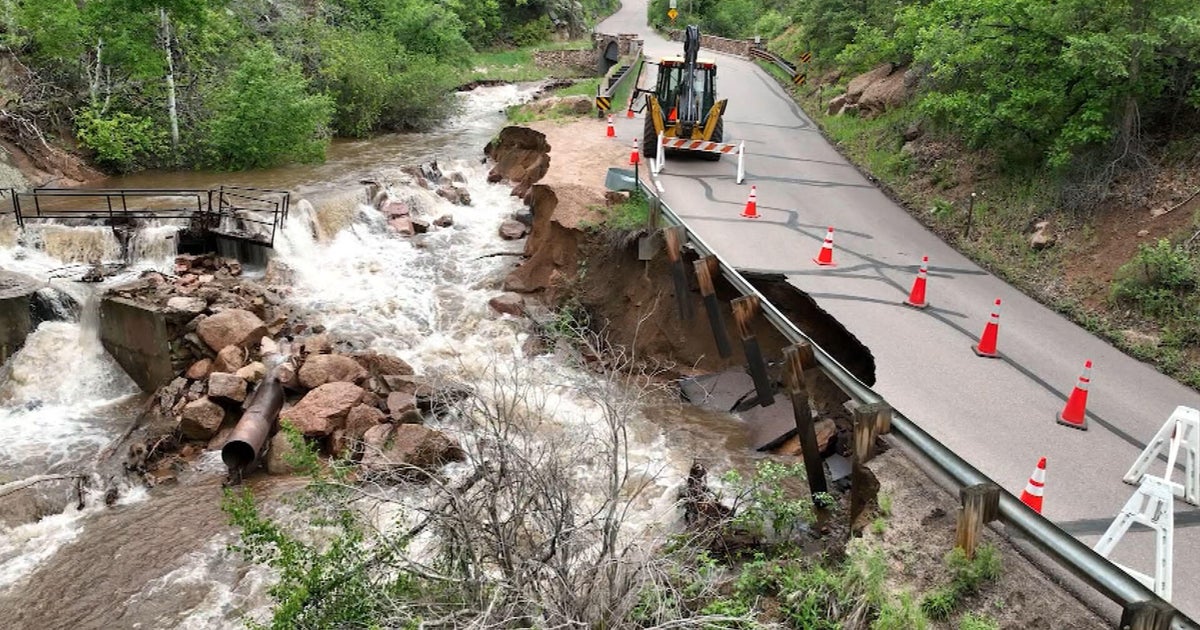Alaska
Little fish, big tradition: Alaskans embrace the culinary and cultural tradition of hooligan

On the last day of May, Ratdawan Haywood tried her luck at the mouth of Twentymile River near Portage. She dipped her net into the grayish brown river, where it disappeared for a few moments before it emerged empty. Her blue Lowe’s bucket sat on the shoreside near her, empty as well.
“It’s slow this year,” she said. “People say last year was pretty good and this year is not as good. I heard people are catching them in Seward, but I don’t know where to go.”
Haywood had better luck the week prior, and was able to fill her bucket a couple of times.
Every year, dozens of Anchorage residents like Haywood venture to the southernmost edge of Anchorage’s municipal boundary to the mouth of Twentymile River, in hopes of filling their freezers and fryers with the slender, small silvery fish. For a brief season — the beginning of April to the end of May in salt water and June 15 in freshwater — they can scoop hooligan fish out of the water with long nets. The hooligans’ arrival is the kick off to the long-awaited summer season for many families who turn the fishing trip and the subsequent fresh fish fry into celebratory events that center on family, friends and the sharing of food.
“I think the move is to take what you think you can eat, and then share with everyone else, because it seems like everyone has a use for it,” said Randy Guintu who grew up in Anchorage and fished often with his family.

and going to Seward, Willow or Twentymile and hooligan being one of the first fish that
young children are able to catch for themselves. (Young Kim)
Haywood also spent a lot of time fishing with her family. She said she took her children to catch hooligan every year, and would fry and bake the little fish for her family to eat. But then her children grew up, and her recent trip to the river was her first in about a decade. She wanted to get out of the house, she said, and still likes to fry the hooligan, but she’s been more experimental with the fish she caught the week before – trying them in Thai soups like tom yum.
“It was last week, I actually told my mom I wanted to make tom yum soup,” she said. “Sometimes people think the fish is small and the meat is squishy so some people don’t like them because it’s a lot of oil.”
Hooligan, also known as ooligan, smelt, candlefish and eulachon, are extremely oily – up to 20% of the fish is fat. The small fish is considered to be a keystone species for the West Coast. A multitude of marine and land animals rely on hooligan for food in the spring months, and the fish is prized by Indigenous people in the Northwest for its oil, medicinal and food values. Before the gold rush, trails like the famous Chilkoot Trail were used by Indigenous people to trade ooligan oil. These trails were sometimes called “grease trails.”
Ooligan oil is a staple in Ruthie Constantine’s home. She moved to Anchorage in 2009 from Metlakatla, a Tsimshian community near Ketchikan in Southeast Alaska. She grew up eating hooligan and its oil – which is made by fermenting large batches of the fish before rendering the oil into different grades. Constantine said they get ooligan grease from Canada, where her tribe is originally from.
Despite growing up eating hooligan, Constantine only tried fishing for it when she first moved to Anchorage.
“It was a different experience to see and try,” she said. “My husband’s aunt took us out and wanted us to try. After that we were hooked.”

Constantine and her family often fish for friends and family who live back home in Metlakatla. When they visit, they bring two 50-pound freezer boxes on the plane with them. Then, starting with her grandma’s house, they go around the community with gallon bags full of fish for whoever wants or needs them.
“To bring them home feels – I don’t know how to describe it – it’s like a piece of joy just being able to share something that everyone loves to have at home,” she said. “It’s nice to provide for them and be able to give, and to be able to share with everybody.”
Constantine, as well as her friend’s and family back home, like to fry the fish whole with flour and seasoning or smoke them using traditional methods her grandmother taught them.
“Depending on who we’re having our Native food dinners with, sometimes the older people like a small bit added to their berries,” she said.
Guintu and his family also grew up frying the hooligan fish whole. Guintu works in the survey field and has commercial fished in Cook Inlet.
“I feel like hooligan is one of the first fishes young children are able to fish for,” he said. “I kind of remember growing up and being dragged down to Seward, and we would go to Willow or Twentymile. It’s kind of something that I’ve done for my family, being like one of the only adult children from my generation that actually likes to go out and fish.”
He tries to go annually with his family and friends, but hasn’t been able to go the last few years. But, family friends have made sure he doesn’t go without hooligan to eat – which they all typically like floured, seasoned and fried fresh and whole.
When he does fish, Guintu said, he likes to share his catch with his aunts or grandma. Their method is to take the biggest sized hooligan, butterfly and marinate it in garlic, soy sauce, brown sugar, vinegar, MSG, Sprite or Coke and liquid smoke, before baking them at a low temperature to create a smoked effect. Then, they’d fry the fish.
“It’s like a potato chip,” he said. “You just eat everything, it’s crunchy. But that takes a lot of time. The move was to bring them to grandma’s house because she made them the best. I think that’s probably pretty typical with most Filipino families. There’s a party, just fry and go really.”
He said the flesh of the fish is white, delicate and oily and not “super fishy” in taste. Most recipes from any culture calling for milkfish or mackerel could easily translate to using hooligan, he said.
“I feel like there’s a lot of cultures that have really made it popular, and really have a good way of preparing them,” he said. “Usually it’s a lot of ethnic cultures like the Hmong or the Hawaiians or the Koreans. I’m really intrigued to see what the Greeks or some of the other Europeans are doing with them. I think it’s a pretty cool resource to have.”
Like Haywood, whose bucket was empty Wednesday afternoon, Guintu said he’s been “kind of concerned about some of the returns” he’s seen.
“It just used to be – when we were kids, we went down to Nash Road and we’d be like five years old, you’d bring a spaghetti strainer and you can scoop them out of the creek,” he said, referencing Seward.
Whether it’s fishing or hunting, Guintu said, he likes providing for his family and others.
“I felt like it was something we did traditionally and I wanted to keep that tradition strong with the next generation,” he said. “I think it’s a pretty important personal use and subsistence fishery for all Alaskan residents.”
Catching the fish has become a tradition for many. For Haywood, who came to the river to try her luck after a decade hiatus from the fishery, it’s a tradition she’s picking back up.
“From now on, I’m going to try and come out every year and catch it for the season,” she said.
This reporting is supported in part by a grant from the Alaska Humanities Forum and the National Endowment for the Humanities, a federal agency. Any views, findings, conclusions or recommendations expressed in this report do not necessarily represent those of the National Endowment for the Humanities.”

Alaska
Alaska Railroad work train derails north of Talkeetna with no injuries

An Alaska Railroad train derailed north of Talkeetna early Friday morning with no injuries reported.
Three crew members were aboard the work train at the time of the incident, according to a spokesperson for the railroad. The cause of the derailment was not immediately clear, they said.
Catherine Clarke, an Alaska Railroad spokesperson, said the derailment led to a puncture on the derailed locomotive’s 2600-gallon diesel fuel tank. The Alaska Department of Environmental Conservation is responding to the incident.
“The damaged fuel tank has been secured and initial containment strategies put in place, as efforts continue to remediate the impacted site,” Clarke said by email on Friday afternoon.
Department of Environmental Conservation staff are coordinating with the railroad and other agencies on cleanup, officials said. In a situation report, DEC said Friday afternoon that the amount of fuel spilled “is unknown at this time.”
The derailment took place just after 3 a.m., approximately 22 miles north of Talkeetna on the Curry loop track — a section of the railroad that provides access to a quarry and is not accessible by road, Clarke said.
The derailment occurred around 400 feet from the Susitna River. There are barriers between the fuel spill and river, DEC said.
“The nearest culvert leading toward the river has been secured and blocked as a precautionary measure. No reports of impacts to surface water have been reported. No wildlife impacts have been observed,” the agency said in its situation report.
The Alaska Railroad typically transports around half a million passengers per year. The derailment was not expected to impact the railroad’s main line, which operates trains between Fairbanks and Seward, Clarke said.
Alaska
Alaska Gatorade Player of the Year Rilen Niclai leads Service to opening-round victory in state baseball tournament
For the third year in a row, a player from the Service High baseball program with the same last name was awarded Alaska Gatorade Player of the Year. But for the first time, the honor belongs to Rilen Niclai after his older brother Coen received it in each of the previous two seasons.
“I’m doing it for the family and to make them proud,” he said.
Niclai did just that Thursday afternoon as he helped lead the reigning champion Cougars to a 5-0 win over Juneau-Douglas in the opening round of the Division I state tournament at Mulcahy Stadium.
He hit a solo home run over the left-field fence in the bottom of the third inning in his second at-bat to extend Service’s lead to 2-0 which also meant he got to uncork his signature celebration with head coach Willie Paul.
“It felt great just seeing it go out and jogging the bases and going to see Paul for that celebration,” Niclai said.
During the winter workouts the duo came up with it and said ‘We have to do that’ during the season whenever he hit a home run. As Niclai embarks on the final stretch after touching third base, Paul imitates a quarterback faking a handoff and pretends to throw a back-shoulder touchdown pass to Niclai as he crosses home plate.
“It’s awesome to have those guys on the roster and be able to step up there exactly when you need them,” Paul said. “He’s a stalwart on defense and he’ll hop on the mound for us during this tournament and we expect big things. He’s pumped for (GPOY) and it’s been on his mind since he saw his brother win it twice.”
Coen is currently a freshman playing for the University of Oregon baseball team. Coen texted his younger brother every day of the season telling him ‘You’ve got this’ and ‘Go win this for me’ and texted him as soon as the Gatorade announcement was released at 5 a.m. Alaska time on Monday morning.
“I was happy to wake up to that,” Rilen said.
Paul thought his team’s overall performance on Thursday was good although he would’ve liked to have seen them perform better offensively given the emphasis they put into that aspect of the game in practice leading up to state.
“We’ve got a bunch of guys that stepped up in a time that we needed them and I thought that our defense played solid,” he said.
The got the Cougars back in the win column coming off a hard-fought loss to Eagle River in the Cook Inlet Conference tournament title game. It took 10 innings to decide a victor but Paul said “in a tough battle like that, there really is no loser in that game” and that his players didn’t dwell on the defeat.
“It feels like it because there’s a loss in the loss column but you get your guys together and you say ‘Hey man, we went toe-to-toe with one of the other best teams in the league’ and we fought hard for 10 innings and had a little bad luck,” he said. “They were all pumped coming out of that game, looking forward to this.”
Sitka 3, South 1
The Southeast champion Sitka Wolves remain undefeated against in-state competition after using a strong hitting performance in the bottom of the fifth inning to overcome a 1-0 deficit and score all the runs they’d need to beat the Wolverines. Leading the way on the plate was senior Tyson Bartolaba who was responsible for two RBIs off of one hit in his two at-bats.
Colony 6, Dimond 1
After being held scoreless through the first five innings, the bats for the Knights finally got going in the bottom of the sixth when they recorded all six of their runs to mount and complete a late comeback. Hayden Sherman and Brock Baker each recorded a pair of RBIs in the pivotal frame.
Division I Softball pool play roundup
South 11, Juneau-Douglas 3
The Wolverines were powered to victory by strong outing on the mound by right-handed pitcher Millicent Wurst who struck out 12 batters and only allowed four hits and three runs over five innings.
Colony 15, East 7
The Knights used an explosive performance on offense to outpace the defending state champion Thunderbirds. They were led by Kaidence Browning who recorded a hit on all three of her at-bats that included a home run to center field in the fourth inning and doubling in the first and third.
Juneau-Douglas 15, Dimond 0
The Crimson Bears notched their first win of the day in their second game when they shut out the Lynx in a game where they made the most of their at-bats while capitalizing on their opponent’s mistakes.
Colony 4, Chugiak 2
The Knights completed their comeback over the Mustangs in walk-off fashion when Browning came up clutch with her second home run of the day at the perfect time. With the game tied in the bottom of the seventh inning, she hit the ball to left field, resulting in the two runs needed to secure the decisive victory.
Alaska State Division I Baseball Tournament
Thursday-Saturday
At Mulcahy Stadium
Thursday
First round
Sitka 3, South, 1
Service 5, Juneau-Douglas 0
Colony 6, Dimond 1
Eagle River vs. Wasilla, 7 p.m. (late)
Friday
Consolation
South vs. Juneau-Douglas, 10 a.m.
Dimond vs. Loser Eagle River/Wasilla, 1 p.m.
Semifinals
Sitka vs. Service, 4 p.m.
Colony vs. Winner Eagle River/Wasilla, 7 p.m.
Saturday
4th/6th place, 11 a.m.
3rd/5th place, 1:30 p.m.
Championship, 4:30 p.m.
Alaska
Opinion: The Alaska Railroad needs to finish the Point MacKenzie extension

The Alaska Railroad Corp. has a clear mission: to provide safe, efficient and economical transportation and real estate services that support and grow economic opportunities for the State of Alaska. However, despite decades of operation and hundreds of millions in annual revenue, the ARRC has built no significant new track since Alaska purchased it in 1985. While the railroad thrives on tourism and maintains its infrastructure well, it has largely ignored its most critical responsibility — helping to unlock Alaska’s immense natural resource wealth for the benefit of Alaskans.
President Trump’s 2025 Executive order, Unlocking Alaska’s Extraordinary Resource Potential, underscores what many of us have known for years. Alaska’s oil, gas, critical minerals, timber and coal are not just important to our state economy; they are vital to America’s national security and pivotal to our energy future. The EO directs federal agencies to expedite projects like the Point MacKenzie Rail Spur, a 32-mile rail extension that would connect the Alaska Railroad to Port MacKenzie, one of the deepest-water ports in the state and a future export hub for our resource industries. With 75% of the project already built, including embankments, bridges and culverts, the remaining work is straightforward and shovel-ready. All that’s missing is the will to finish the job.
The ARRC made $250 million in revenue in 2022, generated $39 million in net income and did it all without a dime of operating subsidies from the state. That’s amazing and commendable, especially just a year after the pandemic. But in the process, the railroad has focused disproportionately on maintaining current operations and catering to the tourism industry. Freight, which made up 44% of revenue, remains ARRC’s core competency. It moved nearly 1.5 million tons of gravel in 2024 and continues to support oilfield operations and barge connections to the Lower 48. Yet when coal exports collapsed after 2011, the railroad chose to dismantle the Seward Coal Terminal instead of pursuing new freight corridors to diversify revenue. The lesson is simple: Alaska needs infrastructure that serves the real economy, and serves Alaskans — the owners — not just sightseeing tourists.
Port MacKenzie and the spur that would serve it are central to Alaskans’ future. Located just across Knik Arm from Anchorage, the port has a deep draft, no congestion and 9,000 acres of industrial land ready for development. The rail spur connecting it to Houston is already 75% built, with $184 million invested. The final cost to complete the spur is hotly debated. The ARRC cites a $290 million estimate, but some experts believe it can be done for closer to $100 to $150 million. Regardless, what’s clear is that the return on investment it delivers will far exceed the cost.
This spur is not speculative. It is a strategic necessity. Companies like Trilogy Metals have already committed to shipping copper concentrates from the Ambler Mining District through Port MacKenzie. Timber exporters are eyeing the spur to reduce trucking costs. The $43 billion Alaska LNG project could use it to transport construction materials, pipe and heavy equipment. And coal and fly ash exports could resume through this more efficient port, reducing our dependence on imports and creating jobs in the process. The possibilities are endless.
The spur would also bolster Alaska’s military logistics. Fort Greely, Eielson Air Force Base and Fort Wainwright all rely on the ARRC to transport munitions, Stryker vehicles and other equipment. Completing the spur would shorten transport distances and give the Department of Defense another access point for Arctic defense. In today’s geopolitical environment, rail access to secure ports is a national security issue.
Despite this, the ARRC continues to prioritize projects like the $137 million Seward passenger dock, set to open in 2026. While tourism is important, the revenue it generates is limited, seasonal and often tied to flat-fee contracts with cruise lines. Many passengers travel in privately operated dome cars under “pull” agreements — where the cruise company pays ARRC a set fee to haul its cars — yet those riders may still be included in total passenger counts. This can give a misleading impression of the railroad’s fare-based revenue and economic impact. Alaska’s long-term prosperity lies not in cruise ships, but in our resources.
We need to finish what we started. Completing the Point MacKenzie Rail Spur is the fastest, most cost-effective way to deliver results for the Alaska economy. It aligns directly with Trump’s EO, addresses freight needs, supports national defense, and creates the foundation for job growth in mining, timber, energy and construction. It reduces shipping costs by 32 miles compared with Anchorage, and by 140 miles compared with Seward. That’s a competitive edge Alaska cannot afford to ignore.
The ARRC must remember who it works for. It is a state-owned corporation, funded by public investment, accountable to all Alaskans. Our citizens expect it to grow the economy, not just maintain what already exists. The time for half-measures is over. The Point MacKenzie Rail Spur is ready, relevant and overdue. It is the key to unlocking the next chapter of Alaska’s resource economy, and we must not let bureaucratic inertia or competing port politics stand in the way.
Let’s finish the spur, open Port MacKenzie to full-scale development, and secure Alaska’s place as a global resource and strategic powerhouse. The time to act is now.
Kevin McCabe is the representative for House District 30, which encompasses Point MacKenzie, Big Lake and follows the Parks Highway all the way up to Anderson.
• • •
The views expressed here are the writer’s and are not necessarily endorsed by the Anchorage Daily News, which welcomes a broad range of viewpoints. To submit a piece for consideration, email commentary(at)adn.com. Send submissions shorter than 200 words to letters@adn.com or click here to submit via any web browser. Read our full guidelines for letters and commentaries here.
-

 News1 week ago
News1 week agoVideo: Faizan Zaki Wins Spelling Bee
-

 Politics6 days ago
Politics6 days agoMichelle Obama facing backlash over claim about women's reproductive health
-

 News1 week ago
News1 week agoVideo: Harvard Commencement Speaker Congratulates and Thanks Graduates
-

 Politics1 week ago
Politics1 week agoMusk officially steps down from DOGE after wrapping work streamlining government
-

 News1 week ago
News1 week agoPresident Trump pardons rapper NBA YoungBoy in flurry of clemency actions
-

 Technology1 week ago
Technology1 week agoAI could consume more power than Bitcoin by the end of 2025
-

 Technology1 week ago
Technology1 week agoSEC drops Binance lawsuit in yet another gift to crypto
-

 Business1 week ago
Business1 week agoSix Flags to cut 135 jobs at Knott’s, Magic Mountain and other California parks














